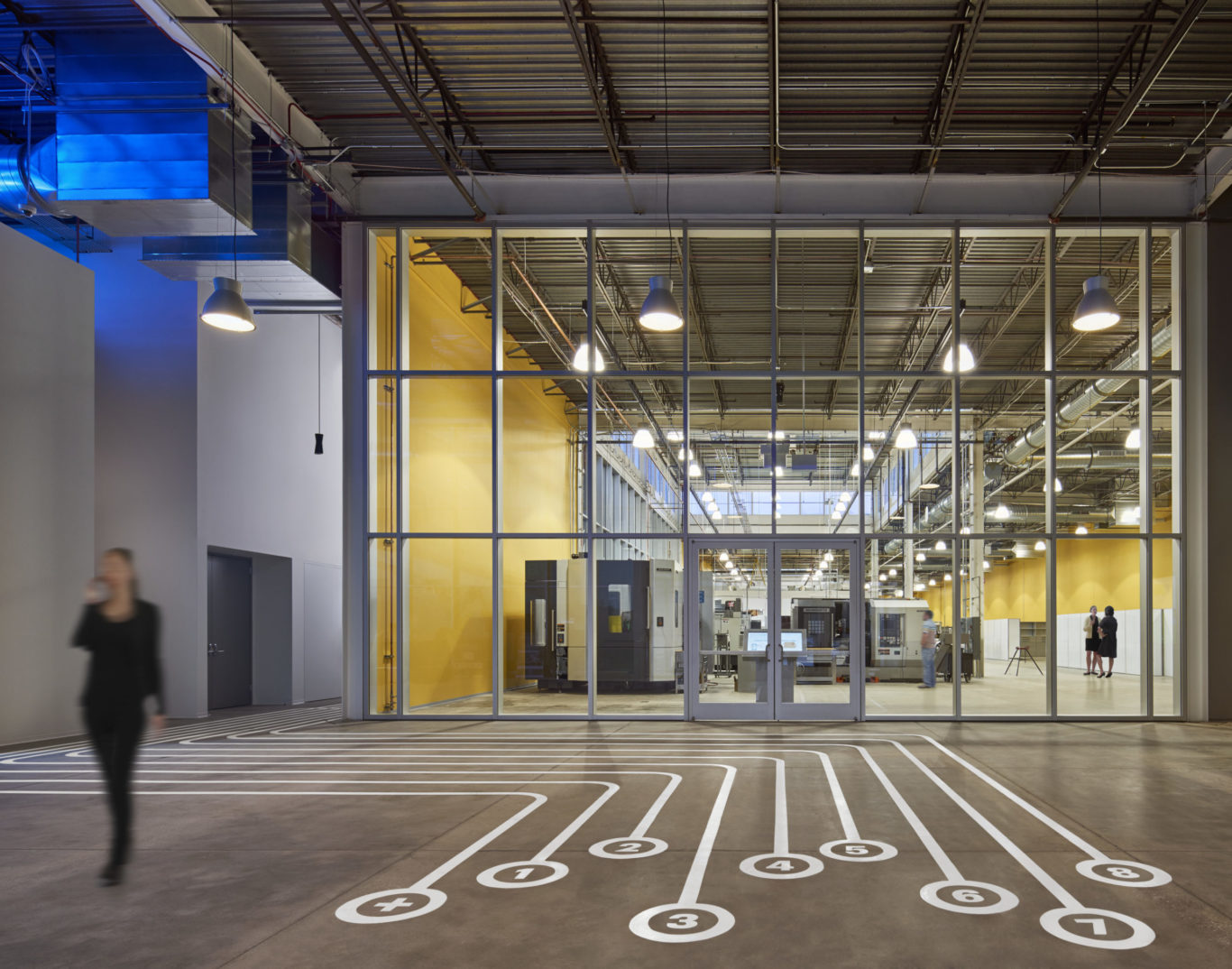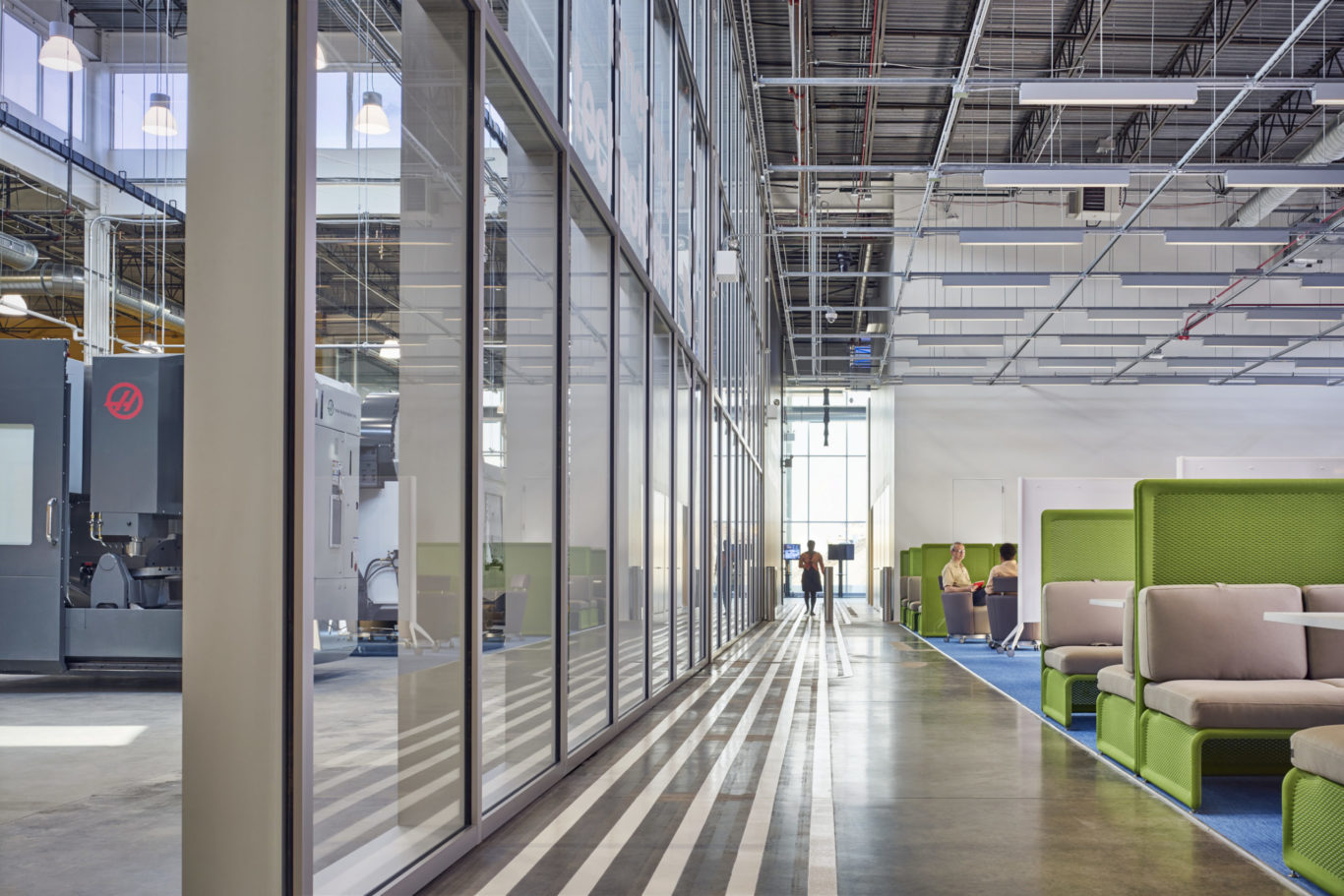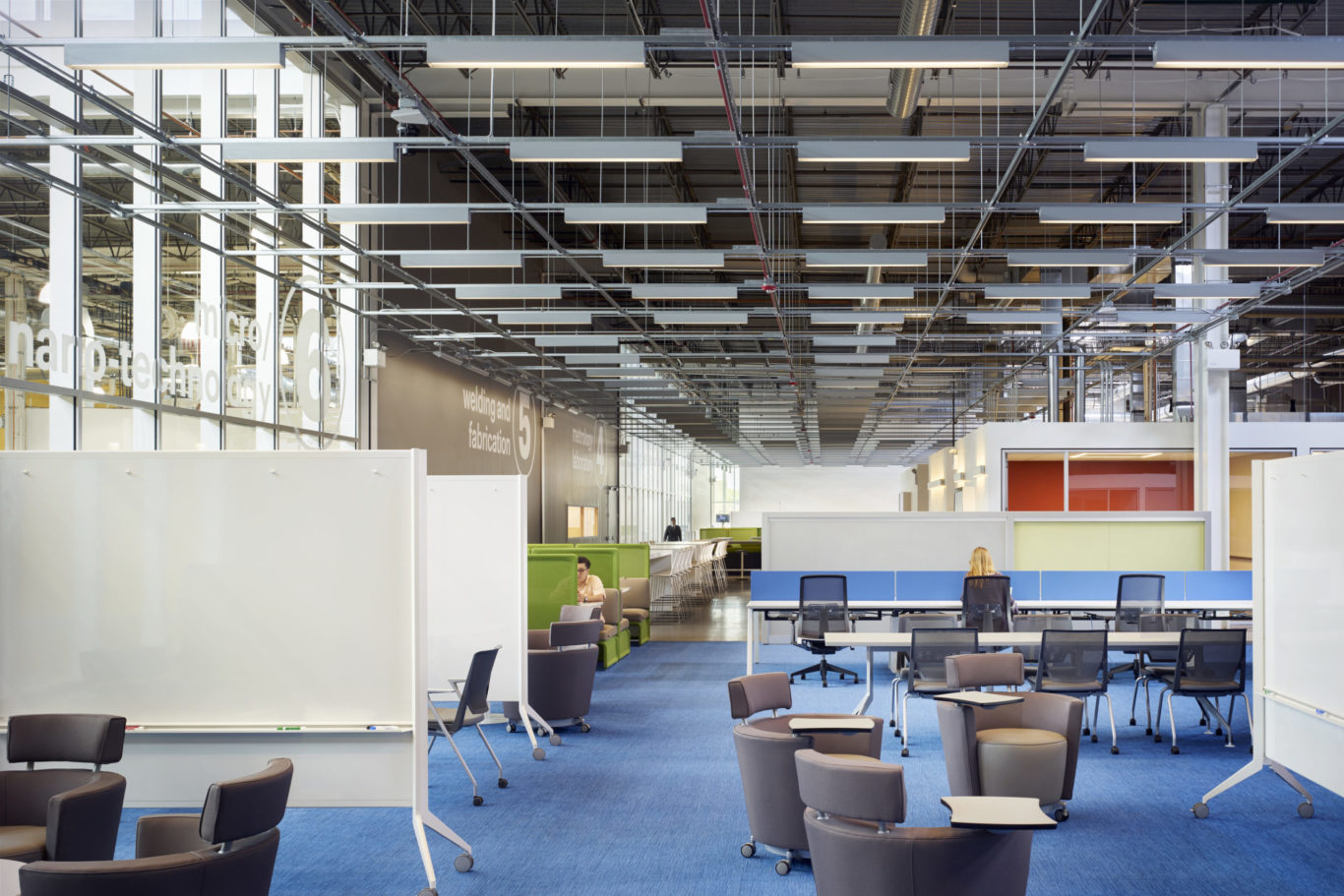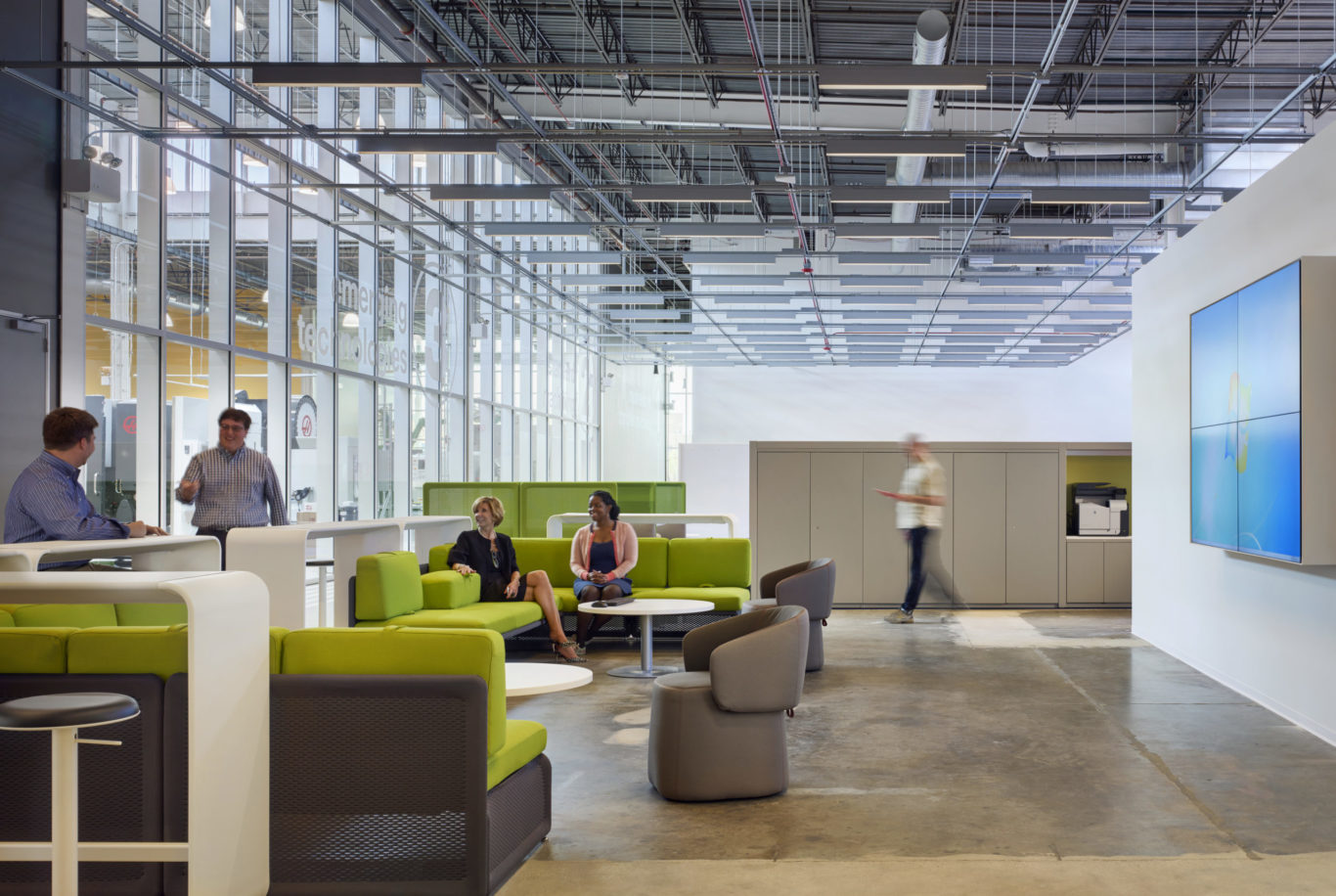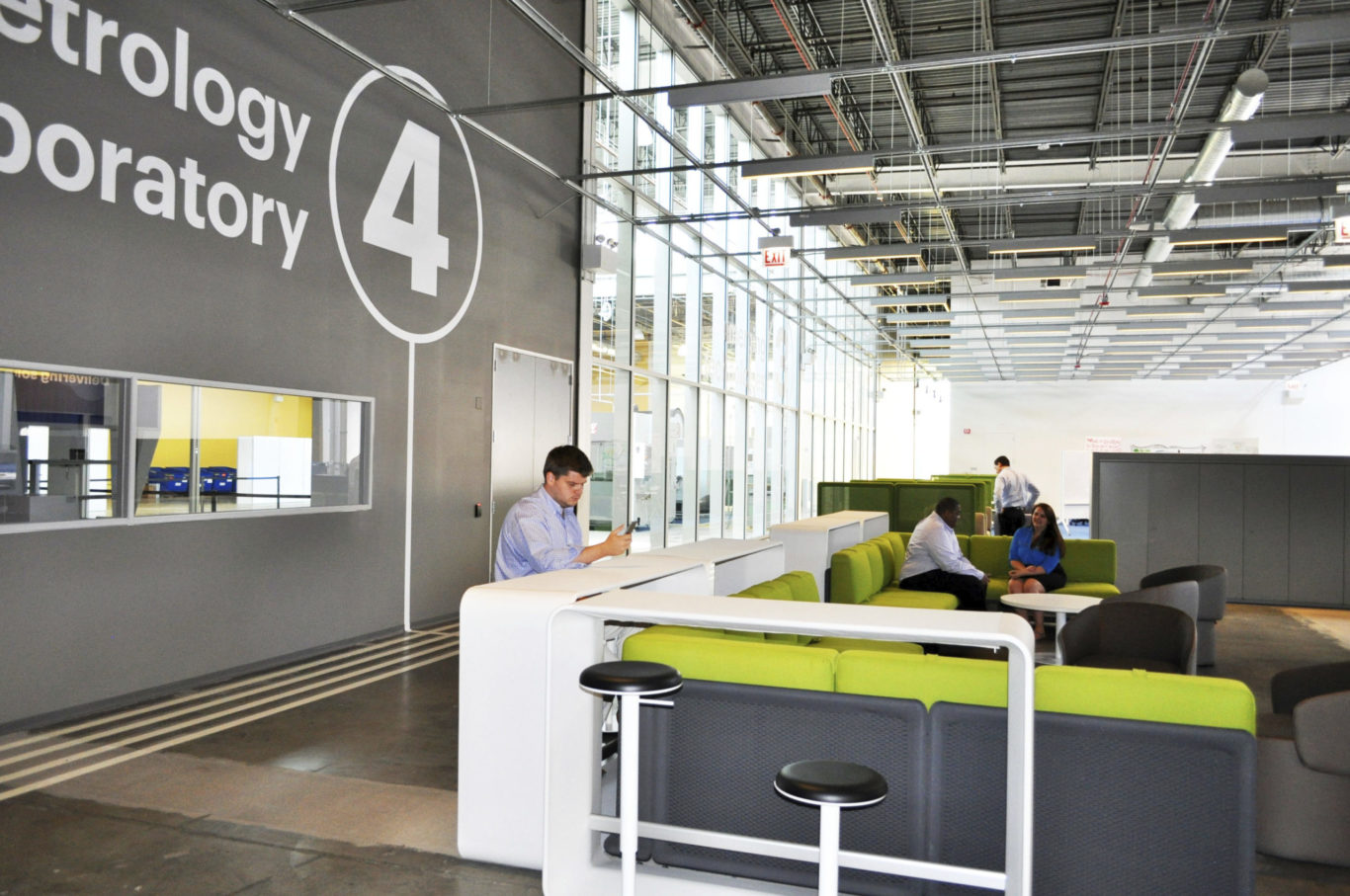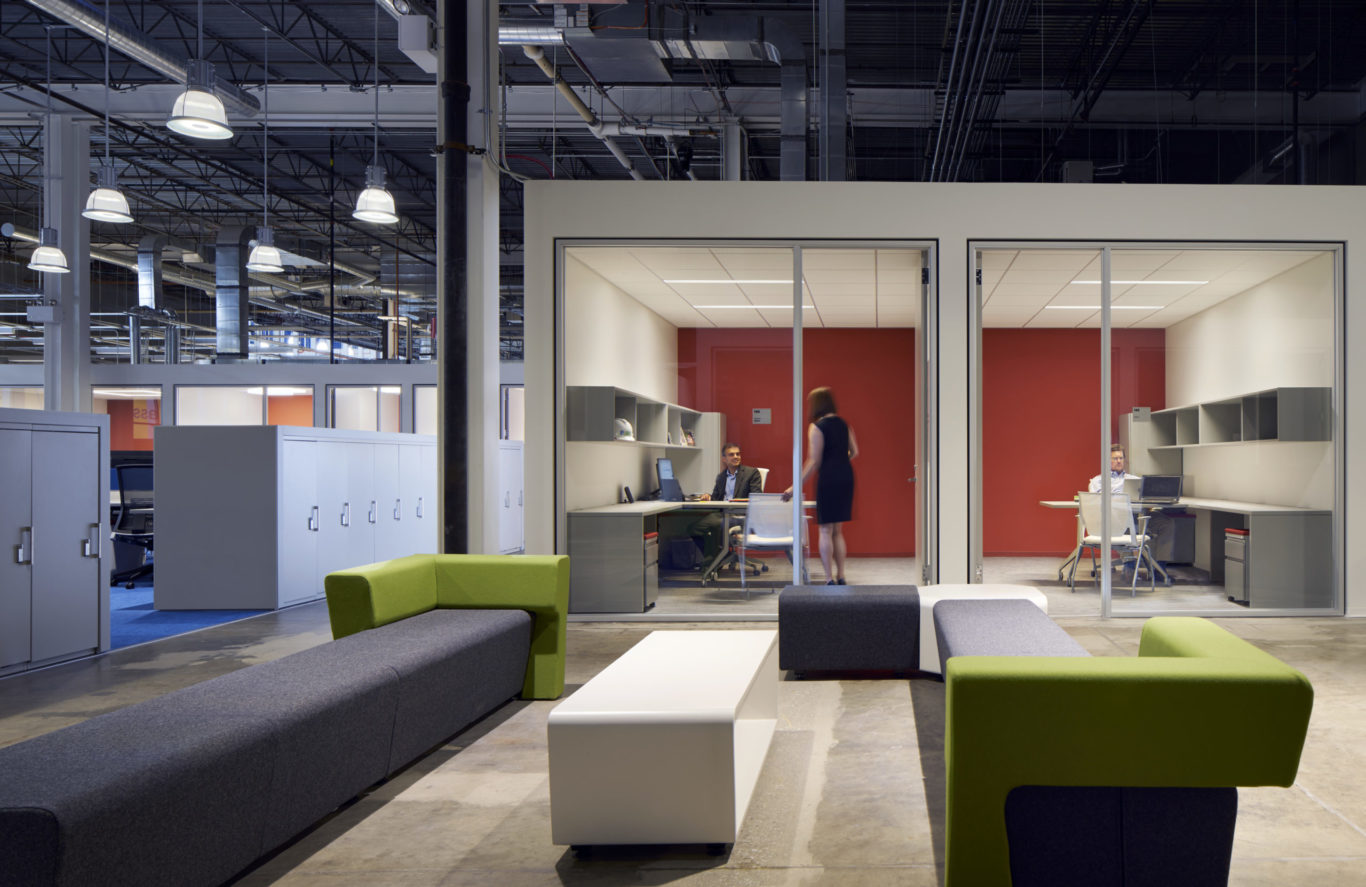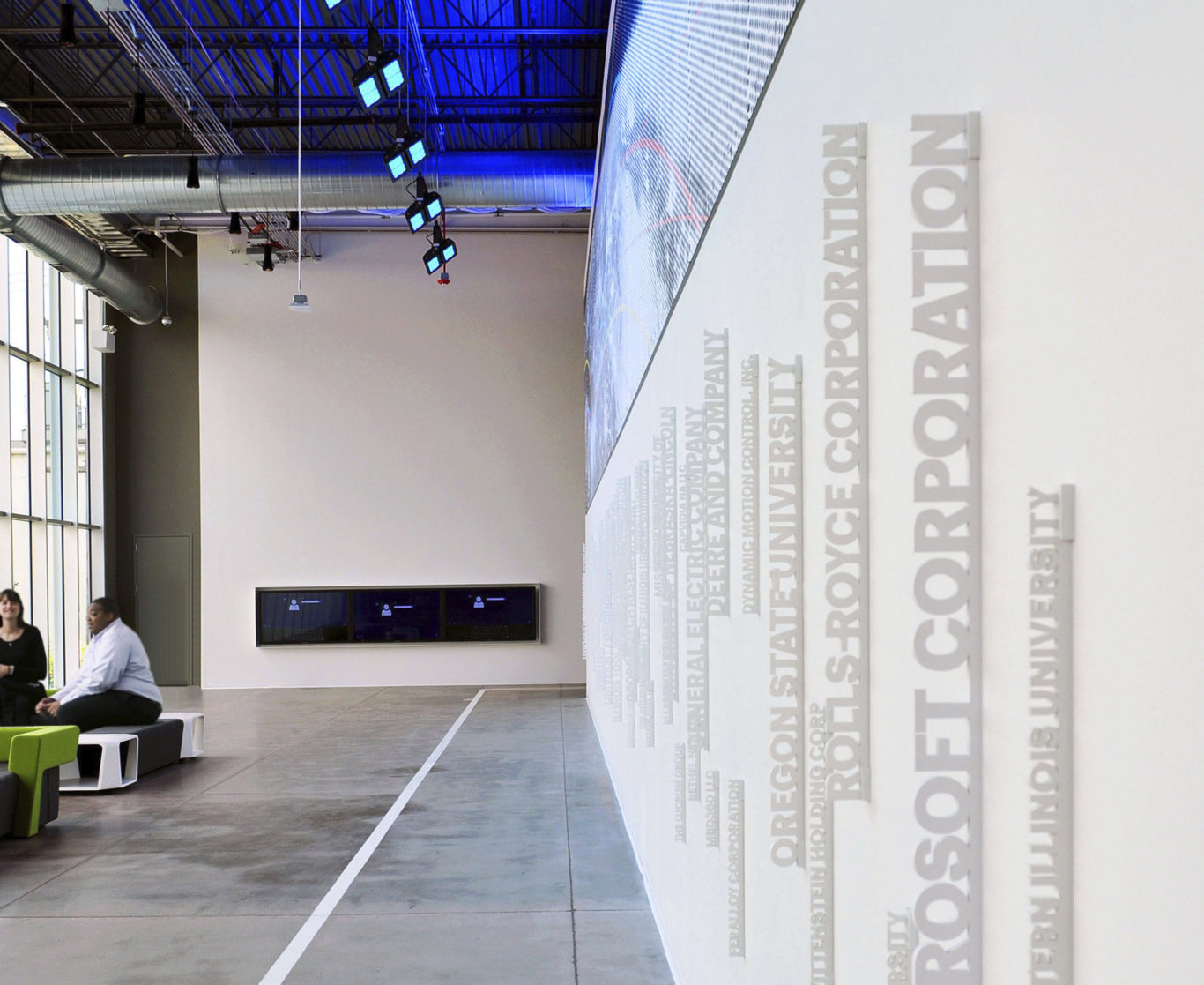MxD (formerly known as UI Labs) is dedicated to fostering collaboration between top-tier research universities, industry and government. A state-of-the-art facility was created to support this cross-disciplinary endeavor—to drive innovation in digital manufacturing, while also providing a demonstration space to showcase cutting-edge work. SOM led the adaptive reuse of an existing manufacturing building located on Chicago’s Goose Island.
This facility has the potential to position advanced manufacturing and our industrial base for U.S. competitiveness in the coming age.
The design transformed the building’s rear facade, glazing three of the building’s 14 structural bays from floor to ceiling in order to create a welcoming entrance and flood the space with daylight. Once inside, visitors step into a double-height open atrium—known as the “town hall”—which has been designed as a workplace and social space. The town hall leads to a state-of-the-art classroom and a multipurpose room that can hold 75 and 200 people, respectively. These two rooms encourage both formal and informal learning and have been equipped with the technology required for collaboration with off-site partners.
Behind the town hall lies the heart of the facility: a digital manufacturing floor, a collaborative engineering space, two open workspaces, a café and social hub, offices, and conference spaces. Modular workstations and breakout areas are arranged in an open studio setup to foster collaboration, make spatial re-programming simple, and keep sightlines across the facility clear. Because researchers and workers use the facility for different amounts of time and uses, the workspaces are programmed to accommodate variations in densities and types of furnishings.
A comprehensive suite of environmental graphics brings further cohesion, information and inspiration to the interior. SOM’s design provides a building that is flexible, robust, and configured to support future expansion — a new typology for 21st century manufacturing that can support fast-paced, digital age invention. With a range of sustainability measures including daylight harvesting, an electro-chromatic glass facade, and smart systems that contribute to reduced energy consumption, the lab was able to achieve LEED Silver certification.
